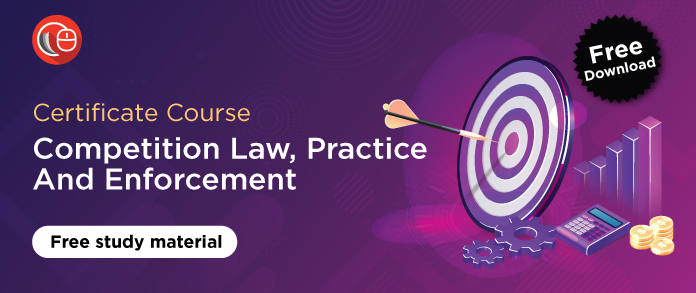Introduction
When two or three companies undergo any form of merger, acquisition or amalgamation, they are essentially joining forces in terms of monetary and physical resources. Their collaboration will definitely bring in operational and strategic efficiencies. Therefore, their collaboration needs to be tested upon the market realities of the sector in which they operate. The following questions may arise when M&A transactions happen between companies:
- Will their collaboration allow them to raise prices? Imagine if tomorrow, Uber and Ola were to merge- it would absolutely kill competition and fares could skyrocket leaving consumers with no real substitutes or CHOICE.
- Will the collaboration lead to fewer players in the market? What if it is a market which is only run by those two players intending to collaborate?
- Will the collaboration give the parties an effective control on the downstream players in the market such as the wholesalers, distributors and retailers? Imagine a company owning iron ores merging with a steel manufacturer: an amazing vertical integration!!
- Will the collaboration create barriers for future players to enter the market? What if this market requires heavy capital investment, like aviation?
- Will the collaboration, despite the potential negative effects, bring any efficiencies into the economy?
These are some of the questions that the Competition Commission of India (CCI) will consider for such M&A transactions involving companies of a certain size. In simple words, the CCI would want to know how M&A transactions will impact the competitiveness of the market in which those players will be operating. This is why you need an approval from the CCI regarding the same.
Therefore, as a competition lawyer, it will be your job to draft a comprehensive document and convince the CCI that the transactions will not pose any significant restrictions in the market and will rather bring in economic efficiencies.
Sounds interesting, doesn’t it?
It rather is because not only will you be dealing with the regulatory aspect of the law, but you will also get an opportunity to study various markets, the existing players and their market powers and then test your transaction against the same. You will get a good insight into the economics of the market!
So now that I have you intrigued about the relevance of the work that competition lawyers do in the M&A space, let me take you guys through the skill sets you need in order to actually do the work.
PS: You may notice that I will use the term “merger control” quite a lot. This is because competition lawyers refer to this work as controlling the M&A transactions and hence the term merger control is used in the fraternity as a nomenclature. But please don’t let it confuse you. Merger control, by all means, includes mergers, acquisitions and amalgamations.
- Conducting preliminary Merger Control tests
The phrase sounds all complicated but it really isn’t. When clients come to a law firm presenting a transaction in mind, it does not immediately mandate an approval from the CCI. If you noticed above, I had used the term “companies involving a certain size”. That means, if two very small companies (in terms of their total assets and total turnover) are entering into an M&A transaction, they may not actually need any approval from the CCI because, always remember: the CCI is only interested in examining transactions which would have a significant impact on the market. Therefore, the job of a competition lawyer is to do a preliminary analysis of the companies and the transaction to assess whether the transaction even needs to be notified to the CCI in the first place. For that, there are certain technical tests and thresholds laid down. If only the transaction crosses those thresholds and breaches the tests, it will have to be notified. The nature of this work is advisory and is extremely essential:
- Imagine if you incorrectly notified a transaction which was not required to be notified. You might have cost your client close to a crore of rupees in notification charges and lawyers fees for nothing!
- Now imagine if you do not notify a transaction which was actually required to be notified. You will expose the client to a significant penalty which I will discuss in detail in the forthcoming paragraphs.
Therefore, one needs to know how to conduct these tests.
- Drafting a form 1 or a form 2
Now, this is the real meaty part of the work that competition lawyers do in the M&A space. It follows the preliminary merger control tests. If a transaction is actually required to be notified, then the competition team starts working on preparing a comprehensive document which is either a (form 1 or a form 2) which would ideally include the following:
- Corporate details of the parties entering into the transaction;
- The nature of the transaction: whether it’s an equity investment, a debt investment, convertible preference share investment, a merger or an amalgamation;
- The stages in which the transaction will occur;
- Details of investments that are held by the parties;
- The overlap of operations between the parties entering into the transaction;
- The market share of the parties entering into the transaction in terms of value and volume of their products and services;
- A deep overview of the sector to which the parties belong;
- And most importantly, the economic effect on the competition and the market in general if the transaction were to be approved.
As you can see, it’s a 360-degree assessment of not only the parties, but the transaction, and the industry in general. This is quite a laborious process and the drafting for every transaction takes around 3-4 weeks to be completed. This is why law firms charge anything between INR 10 Lakhs to INR 1 crore per transaction depending upon the complexity of it. In my personal experience I can say that after every transaction you end up gaining a deep insight into the sector as a whole.
- Gun Jumping advisory and litigation
Remember when I mentioned above that lawyers have to be very careful while conducting the preliminary assessment because if they do not notify a transaction which is actually required to be notified – then they would expose the client to a significant penalty.
This is what is called – Gun Jumping- consummating a notifiable transaction without the approval of the CCI. The penalty under Section 43A of the Competition Act, 2002 is also substantial: 1% of the total turnover or total assets (whichever is higher) of the notifying parties. The highest penalty till date has gone up to INR 5 crores. Another form of gun-jumping is if the transaction has been notified to the CCI, but before the approval, the parties give effect to some part of the transaction which in CCI’s eyes would be consummation before approval.
This is a penalty proceeding that the CCI opens up against the parties. It is litigious in nature and we have had over 40 gun-jumping litigations since 2012. This is why competition pre-emptive advisory has become so important in today’s times because no party wants to be stuck with a gun-jumping proceeding affecting its goodwill.
In order to handle such litigations, one not only needs to be aware of the gun-jumping provisions but needs to do a significant study of the jurisprudence set by the CCI so as to effectively advise the clients as to what they should or rather, should not do during M&A transactions which may amount to gun-jumping.
These are the three main categories of work transactional lawyers do in the competition-M&A space.
I suppose you must be thinking that how can three sets of skills be of so much importance? Let me tell you, these broad areas of skill sets are one of the highest-paid skill sets in the industry right now for any competition lawyer with a starting salary of INR 12-13 lakhs per annum. The work comprises 70-80% of the revenue for competition law teams in Tier-1 and Tier-2 firms.
Sounds like Christmas at your doorstep, right? So, the next question is how to actually develop these skill sets?
The reality is that when you are in college or you are working as a litigator, it is next to impossible to get exposure to these skill sets. Moot Court competitions seldom deal with merger control propositions and during internships, you don’t even get exposed to 1% of what the actual work entails, simply for the reason that it requires special training which cannot be imparted in a few weeks of internships. This is why firms are hesitant to do lateral hiring because teams do not have the bandwidth to actually train you and then see if you can do the work. Even during campus placement, competition team partners are looking for students who have some experience of having done the actual work to some extent which is very rare.
It is not like you don’t learn the work at a law firm at all. You do, but then you have to learn it the hard way as I did: work during the day, study during the night.
This extremely enterprising field of law has a very high demand and not a very high supply which you should actually use to your advantage. The only thing they require is some basic training into the actual work that is required to be done.
This is why we decided to put together our experience of having worked on transactions into a comprehensive course called the Certificate Course in Competition Law, Practice and Enforcement, which not only trains you on how to deal with these transactions but makes you industry-ready. When I say industry-ready, I mean that you should be confident of doing an A0- A1 level work after doing the exercises from the course and make a great first impression. If you want to know the firms which have the most elite competition practice teams – both on the merger and enforcement front- you can check out my article here. The best part about doing competition law work in the M&A space is that you not only develop an expertise in this area of law but it also opens a connecting door for those who want to explore M&A work after this. Additionally, you get to do such an in-depth study of various sectors that you may also contemplate working for research firms which do industry studies such as Gartner, The Analyst Agency LLC, Sper Market Research Pvt Ltd, etc (for those who are not looking forward to lawyering in the future.)
So, I hope I have given you a much-needed clarity on the “M&A part of competition law”. When you sit for interviews, it will be quite a surprise to the recruiter if they know that you are aware of the skills you need to have as a competition lawyer because honestly, not many students/professionals make the effort to do this homework. Then imagine the edge you get if you tell them that you not only know of the work, but you also know how to do it which means less burden on them to train you while inducting you.
Students of Lawsikho courses regularly produce writing assignments and work on practical exercises as a part of their coursework and develop themselves in real-life practical skills.
LawSikho has created a telegram group for exchanging legal knowledge, referrals, and various opportunities. You can click on this link and join:
https://t.me/lawyerscommunity2
Follow us on Instagram and subscribe to our YouTube channel for more amazing legal content.






 Allow notifications
Allow notifications

I couldn’t resist commenting. Very well written!